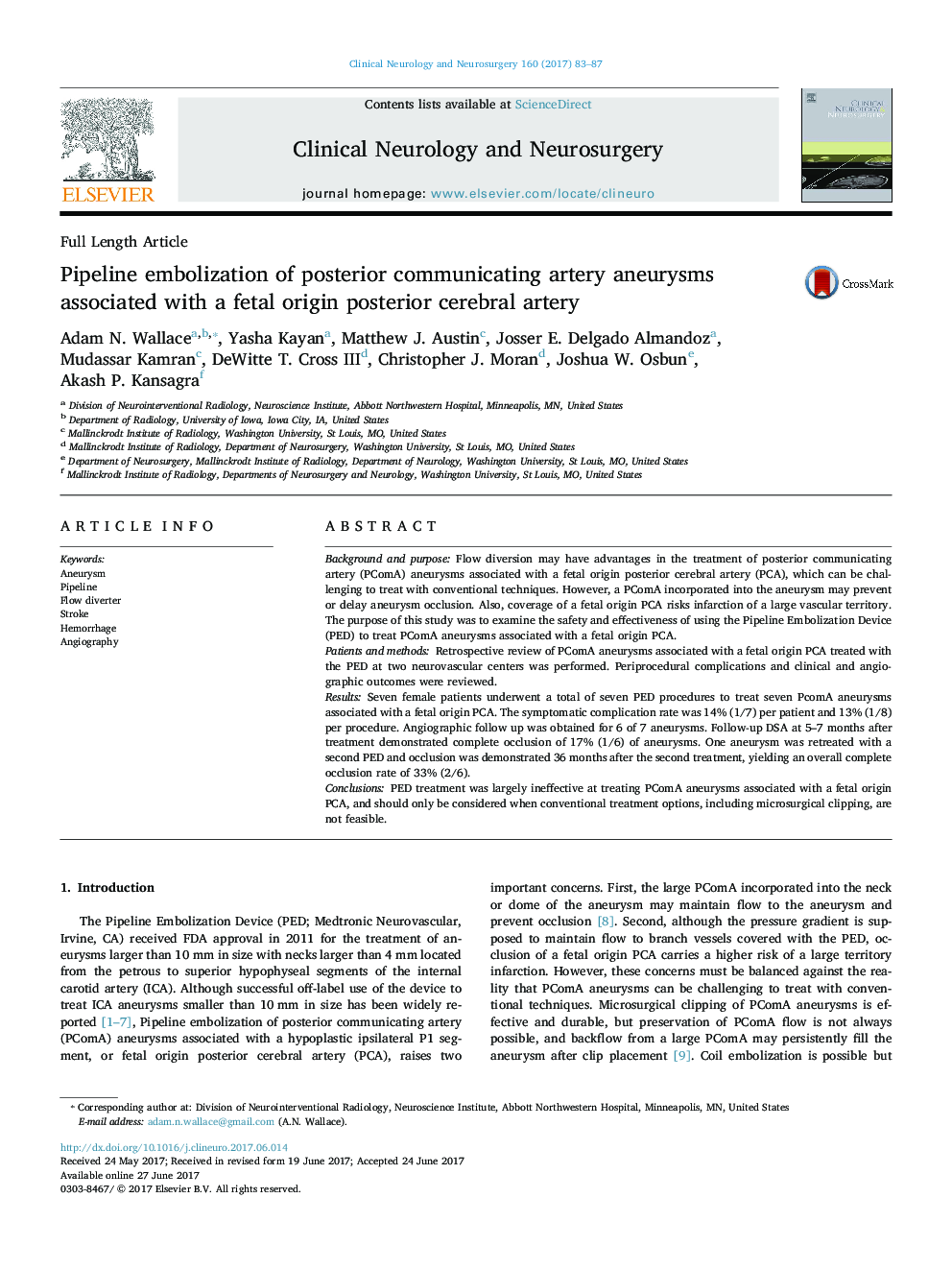| کد مقاله | کد نشریه | سال انتشار | مقاله انگلیسی | نسخه تمام متن |
|---|---|---|---|---|
| 5626947 | 1579662 | 2017 | 5 صفحه PDF | دانلود رایگان |
- Seven PComA aneurysms associated with a fetal origin PCA were treated with Pipeline embolization.
- The symptomatic complication rate was 14% (1/7) per patient and 13% (1/8) per procedure.
- Follow up 5-7 months after treatment demonstrated complete occlusion of 17% (1/6) of aneurysms.
- One aneurysm was retreated and occluded 36-months after the second procedure.
- These aneurysms should not be treated with Pipeline unless other options are not feasible.
Background and purposeFlow diversion may have advantages in the treatment of posterior communicating artery (PComA) aneurysms associated with a fetal origin posterior cerebral artery (PCA), which can be challenging to treat with conventional techniques. However, a PComA incorporated into the aneurysm may prevent or delay aneurysm occlusion. Also, coverage of a fetal origin PCA risks infarction of a large vascular territory. The purpose of this study was to examine the safety and effectiveness of using the Pipeline Embolization Device (PED) to treat PComA aneurysms associated with a fetal origin PCA.Patients and methodsRetrospective review of PComA aneurysms associated with a fetal origin PCA treated with the PED at two neurovascular centers was performed. Periprocedural complications and clinical and angiographic outcomes were reviewed.ResultsSeven female patients underwent a total of seven PED procedures to treat seven PcomA aneurysms associated with a fetal origin PCA. The symptomatic complication rate was 14% (1/7) per patient and 13% (1/8) per procedure. Angiographic follow up was obtained for 6 of 7 aneurysms. Follow-up DSA at 5-7 months after treatment demonstrated complete occlusion of 17% (1/6) of aneurysms. One aneurysm was retreated with a second PED and occlusion was demonstrated 36 months after the second treatment, yielding an overall complete occlusion rate of 33% (2/6).ConclusionsPED treatment was largely ineffective at treating PComA aneurysms associated with a fetal origin PCA, and should only be considered when conventional treatment options, including microsurgical clipping, are not feasible.
Journal: Clinical Neurology and Neurosurgery - Volume 160, September 2017, Pages 83-87
